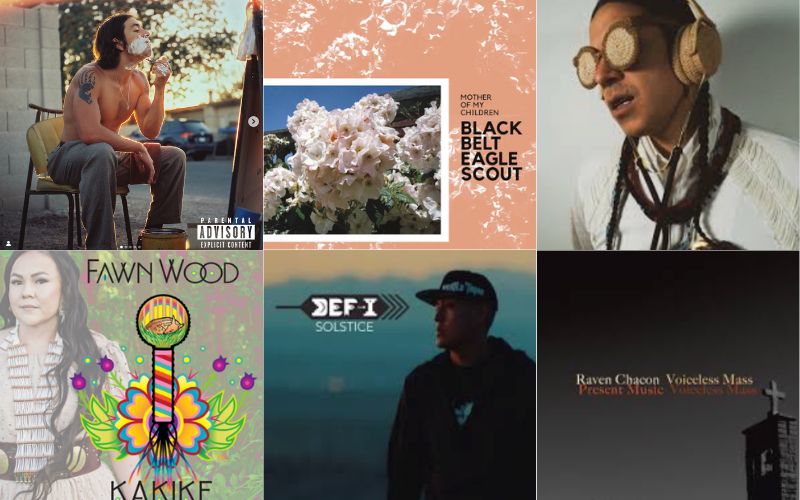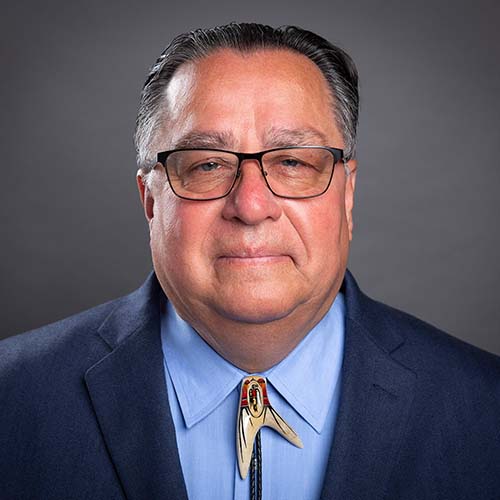
- Details
- By Shaun Griswold
The metal cattle guard hits with a loud thump, introducing miles of bumpy clay-red dirt roads that bring me closer to my return from the city to family in Zuni Pueblo.
My radio is already set to KSHI 90.9 FM. The radio tag reads smoother than the ride, “voice of the A:shiwi”. A mix of Metallica, A Tribe Called Red, and that one Nirvana song we all love plays between reads from the tribal radio DJ. If my ears need a quick fix of something else, I can guarantee George Strait and the Zuni Midnighters will play back-to-back as soon as I turn my radio dial to KTNN.
I started this habit when I learned to drive because the bumpy roads were so shaky that it skipped every second of songs from my Walkman CD player that was plugged from its AUX to the tape deck in my car. Now, I download a playlist that can fill in even if I cannot find the radio signal.
I was asked to share a list of some of the artists I download for my playlists. Because it is the season, I’ve curated this list with Native American Heritage Month in mind. Indigenous musicians are contemporary, classical and traditional. These musicians create sounds to fill my road trips. They are great to blast during Turkey Day parties and really, anytime of the year.
Redbone
It’s important to me that history is honored, and that is precisely what happened when Redbone performed “Come and Get Your Love” for a national audience live on Burt Sugarman’s The Midnight Special in 1974. The song is a hit, and if you know, you know: this song is the foundation for contemporary pop songs made by Native American artists.
Fawn Wood
Fawn Wood stands out right now for her vocals and family musical ties prominent to powwow circles across Indian Country. The Cree and Salish musician is the daughter of Earl Wood, who performed with the group Northern Cree. Wood’s album, Kakike, gives her roots to stand on her own among the talented family.
Tia Wood
Yes, she’s Fawn’s younger sister. Again, this is a musical family. Tia’s sound is a contemporary pop style that blends her traditional roots. Songs like “Sage my Soul”, “Dirt Roads”, “Sky High” are also made with vibrant music videos that expand Tia’s vision as an artist.
Mato Wayuhi
I challenge you to listen to Mato with your eyes closed. He’s composed tracks for the TV show “Reservation Dogs” and the movie “War Pony,” so you’ve likely heard his sound. Now open your eyes to take in Mato as a performer that I’ve seen woo crowds in that good medicine way typically fashioned by R&B singers. Check out his new album, Bygoner, which includes a track (and 2026 tour) with the next artist on the playlist.
Black Belt Eagle Scout
Anytime I’ve seen a video of Jimi Hendrix playing guitar, his hands and fingers melt into his instrument. When Katherine Paul shreds a solo, she takes me right to how I imagine Jimi was during his famous solos that ended with a guitar on fire. Paul performs under Black Belt Eagle Scout and is a must-see when she starts her tour with Mato in February 2026.
Raven Chacon
Classical noise music is a genre pushed forward by the Pulitzer Prize-winning composer Raven Chacon. “Voiceless Mass” brought his sound into the mainstream of classical music, and his latest, “Tiguex,” is to be performed from sunrise to sunset. Raven creates sounds that show Native musicians can go anywhere, in any place. It’s liberating for a number of reasons, and for him, it starts from the outdoor soundscapes around his home in New Mexico. “Each different place had its own color of noise,” Chacon told me in 2022 during an interview for Source New Mexico.
Laura Ortman
A contemporary leader in classical music, Ortman can blend violin with recorded loops to create groundbreaking sounds. She recently composed music for New York City Ballet hall-of-famer Jock Soto. Beyond the violin, Ortman can sing, perform piano, electric guitar, keyboards, and pedal steel guitar. She also composes using audio she records while out in the field.
Chapter House Music
Chapter House Music is a collection of artists who make “Native jams from the native lands of the Southwest.” Bands like Weedrat, Midnight Stew, Dirt Rhodes perform at Chapter House events. It’s common to find their shows at tribal venues featuring other Native musicians like the Jacob Shije Trio, Innastate and The Tewa. Their merch is something special to take home, too.
Def-I
On top of being a stellar lyricist, Def-I earns a place on this list for upholding the core principle of hip-hop: supporting community and artists. You can find him across the live music scene promoting other musicians ahead of his own work. Prominently, Def-I organizes and hosts the annual Gathering of the MCs, a space for Native hip hop artists to mingle, share sounds and celebrate their favorite Native rappers.
Ya Tseen
The forward motion from the evolving musical project of artist Nicholas Galanin is on full display in their current tour with Portugal the Man. Ya Tseen is loud, fun and sweaty music. Check out their single “Ixwsiteen (I See You)” for a taste.
More Stories Like This
11 Native Actors You Should KnowFive Native American Films You Should Watch This Thanksgiving Weekend
Heavy metal is healing teens on the Blackfeet Nation
Over 150 Tribal Museums Participate in Fourth Annual Celebration of Native Life
Help us tell the stories that could save Native languages and food traditions
At a critical moment for Indian Country, Native News Online is embarking on our most ambitious reporting project yet: "Cultivating Culture," a three-year investigation into two forces shaping Native community survival—food sovereignty and language revitalization.
The devastating impact of COVID-19 accelerated the loss of Native elders and with them, irreplaceable cultural knowledge. Yet across tribal communities, innovative leaders are fighting back, reclaiming traditional food systems and breathing new life into Native languages. These aren't just cultural preservation efforts—they're powerful pathways to community health, healing, and resilience.
Our dedicated reporting team will spend three years documenting these stories through on-the-ground reporting in 18 tribal communities, producing over 200 in-depth stories, 18 podcast episodes, and multimedia content that amplifies Indigenous voices. We'll show policymakers, funders, and allies how cultural restoration directly impacts physical and mental wellness while celebrating successful models of sovereignty and self-determination.
This isn't corporate media parachuting into Indian Country for a quick story. This is sustained, relationship-based journalism by Native reporters who understand these communities. It's "Warrior Journalism"—fearless reporting that serves the 5.5 million readers who depend on us for news that mainstream media often ignores.
We need your help right now. While we've secured partial funding, we're still $450,000 short of our three-year budget. Our immediate goal is $25,000 this month to keep this critical work moving forward—funding reporter salaries, travel to remote communities, photography, and the deep reporting these stories deserve.
Every dollar directly supports Indigenous journalists telling Indigenous stories. Whether it's $5 or $50, your contribution ensures these vital narratives of resilience, innovation, and hope don't disappear into silence.
 The stakes couldn't be higher. Native languages are being lost at an alarming rate. Food insecurity plagues many tribal communities. But solutions are emerging, and these stories need to be told.
The stakes couldn't be higher. Native languages are being lost at an alarming rate. Food insecurity plagues many tribal communities. But solutions are emerging, and these stories need to be told.
Support independent Native journalism. Fund the stories that matter.
Levi Rickert (Potawatomi), Editor & Publisher
